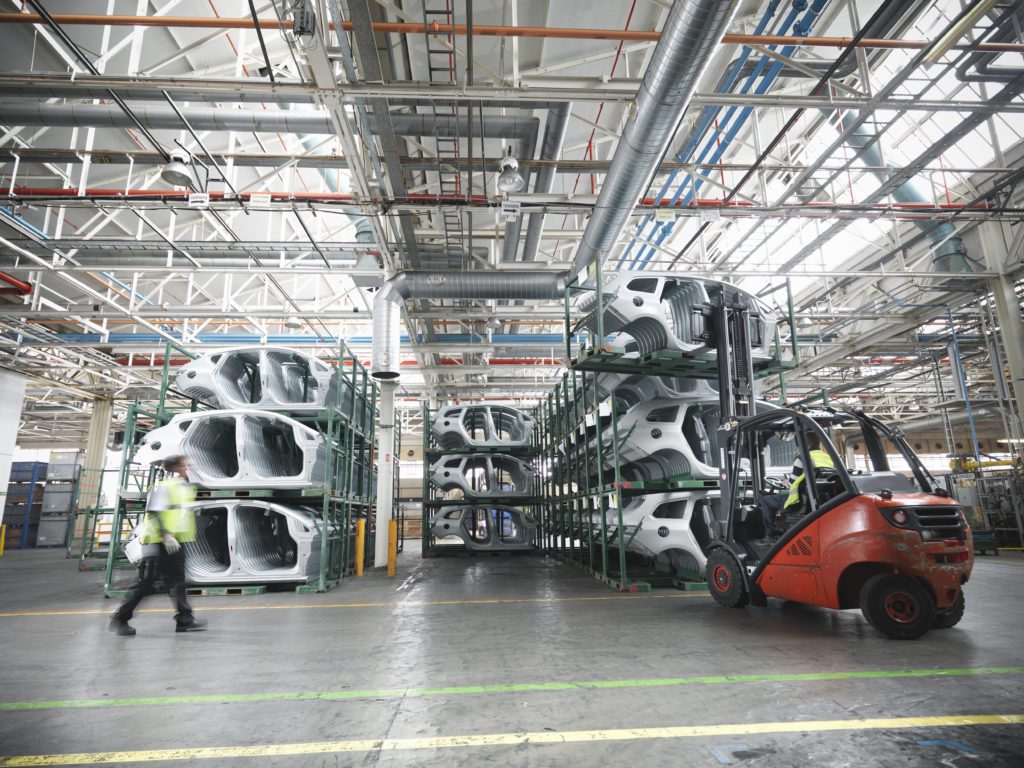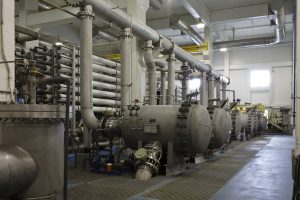Today’s automotive manufacturing plants are particularly susceptible to power quality (PQ) issues that cause unplanned downtime and higher electricity bills.

Modern manufacturing facilities are also highly automated and use large numbers of variable speed drives (VSDs), programmable logic controllers and equipment with embedded microprocessors. These kinds of devices can all produce harmonic pollution that leads to nuisance breaker trips, device malfunction, data loss and premature equipment failure. Another PQ issue is poor Power Factor (PF) – a measure of electrical system efficiency. The main contributors to lower PF are inductive loads such as heaters, welders, lighting and motors. Left uncorrected, poor PF causes higher surcharges and costly penalties on monthly electricity bills. Avoiding downtime and reducing energy spend are crucial for remaining profitable and competitive. This is why automotive manufacturers now pay closer attention to Power Quality and are increasingly interested in ways to improve their power system performance and reliability.
Avoiding unnecessary downtime
Unplanned downtime is estimated to cost automakers an average of $22,000 per minute and even as high as $50,000.[1] These companies cannot afford to let PQ issues cause process disruptions, equipment damage, or worse, bring their entire production to a grinding halt. One leading auto manufacturer decided to address these risks by commissioning a PQ audit as part of a plant expansion. The audit revealed that excessive harmonics were present in the electrical network and caused power disruptions and equipment malfunction that resulted in production losses. The recommendation was to install harmonic filters, PQ meters and an upgrade to the existing power management software.
Actions taken:
- AccuSine PCS+ active harmonic filters were installed on the low-voltage outputs of six of the plant’s transformers
- PowerLogic PM8240 power meters were installed on larger circuits serving more important equipment
- PowerLogic PM5560 power meters were installed on smaller circuits feeding less critical loads
- EcoStruxure™ Power Monitoring Expert software was upgraded to the latest version
Cutting utility bills by improving Power Factor
Automotive manufacturing requires a lot of electricity. Due to the nature of the processes and equipment used, these facilities closely monitor their monthly electricity bills because they have low PF. Electricity companies can charge these customers more for using power inefficiently and having poor PF. Generation, Transmission, Distribution and Delivery charges are applied by utilities to recoup costs associated with lower system efficiency and capacity caused by customers with poor PF. Apparent power or kVA charges are directly related to PF and can be reduced if PF is improved. The good news is that poor PF can be easily corrected and brought to high efficiency levels so help reduce or eliminate these charges.
This was the case for a top tier automaker that wanted to improve energy efficiency in one of their assembly plants. First, they examined their electricity bills to better understand if there were opportunities to reduce them. Initially, they only considered ways to lower the energy and demand charges. But when they inquired about the monthly Power Factor Adjustment Surcharge they were paying, they learned that this charge could be completely eliminated if they installed Power Factor Correction equipment in the form of low voltage capacitor banks. Next, after a simple payback calculation they quickly determined that the ROI could be as fast 6-8 months.
Actions taken:
- VarSet capacitor banks were installed on the low voltage outputs of the plant’s two main incomer transformers
- PowerLogic PM8244 power meters were installed to monitor the two main incoming lines
- EcoStruxure Power Monitoring Expert software was installed and configured to collect both PF and total harmonic distortion data from the power meters in real-time.
Their decision to install PF Correction equipment and upgrade the power monitoring system was successful. Their PF now runs at 0.99 most of the year. In the first 12 months the company saved $204,000 in avoided PF penalty charges and will continue to save each month for the life of the equipment. Furthermore, the facility management team now has improved real-time visibility into their power system operations.
Learn how Power Quality and Power Factor Correction can help your plant succeed
Visit the Schneider Electric Power Quality and Power Factor Correction website to learn more and go to EcoStruxure for Automotive for information about our Smart Facility solutions for Automotive. And EcoStruxure isn’t just for automotive plants – visit EcoStruxure Power for more on the full lineup of related offers.
[1] Source: Advanced Technology Services Inc., (ATS) – Survey of 101 Manufacturing Executives in the Automotive Industry, 2006.



